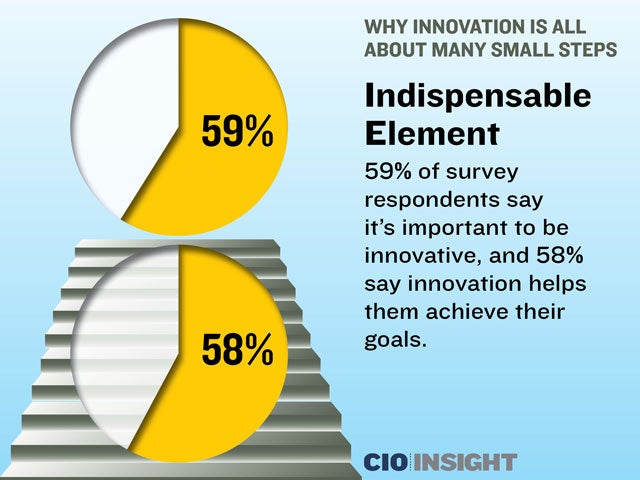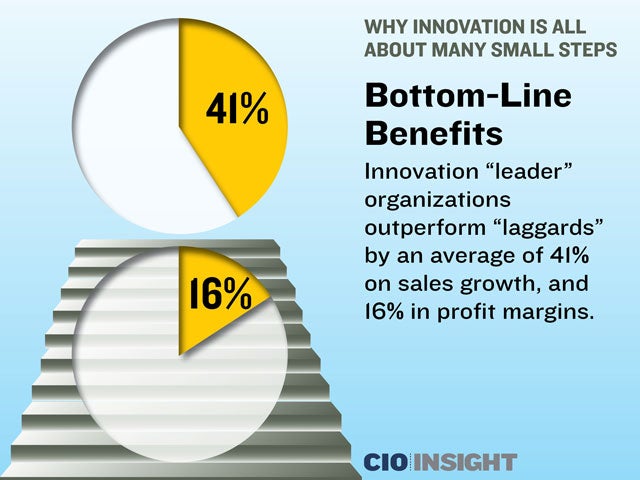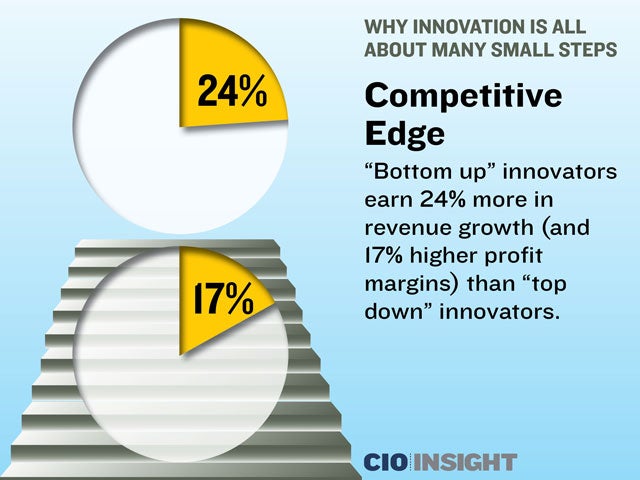
Why Innovation Is All About Many Small Steps
 Why Innovation Is All About Many Small Steps
Why Innovation Is All About Many Small Steps
At innovative organizations, change doesn’t occur in one large motion—it happens through many coordinated, forward-looking steps.
 Indispensable Element
Indispensable Element
59% of survey respondents say it’s important to be innovative, and 58% say innovation helps them achieve their goals.
 Unsubstantiated Opinion
Unsubstantiated Opinion
70% believe that their company is an above-average innovator. However, just 14% work at organizations which reap significant business benefits from innovation.
 IT Inventory, Part I
IT Inventory, Part I
45% say unified communications is a top tech tool in supporting innovation, and 44% say business process workflow automation supports innovation.
 IT Inventory, Part II
IT Inventory, Part II
43% say enterprise social networks serve as a top tech tool in supporting innovation, and the same percentage cite solutions addressing enterprise collaboration software, big data/analytics and digital signage.
 Bottom-Line Benefits
Bottom-Line Benefits
Innovation “leader” organizations outperform “laggards” by an average of 41% on sales growth, and 16% in profit margins.
 Big Production
Big Production
Innovation leader companies outperform laggards by an average of 40% when it comes to employee productivity increases.
 Streamlined Spend
Streamlined Spend
Innovation leader businesses spend only 5% on R&D as a percentage of revenue, while laggards spend 7%.
 Open Air
Open Air
Innovation leader companies spend 29% of their total budget on “blue-sky projects”—research into areas outside of current products or offerings—while laggards spend just 18% on these efforts.
 Tiny Steps
Tiny Steps
81% of innovation leader organizations say their approach to improvement is to make lots of small, frequent changes (as opposed to large “big bets”), while only 19% of laggards do this.
 Up and Down
Up and Down
Overall, 56% of survey respondents describe their company’s approach to strategic development as “top down,” but their approach to innovation is “bottom-up.”
 Competitive Edge
Competitive Edge
“Bottom up” innovators earn 24% more in revenue growth (and 17% higher profit margins) than “top down” innovators.